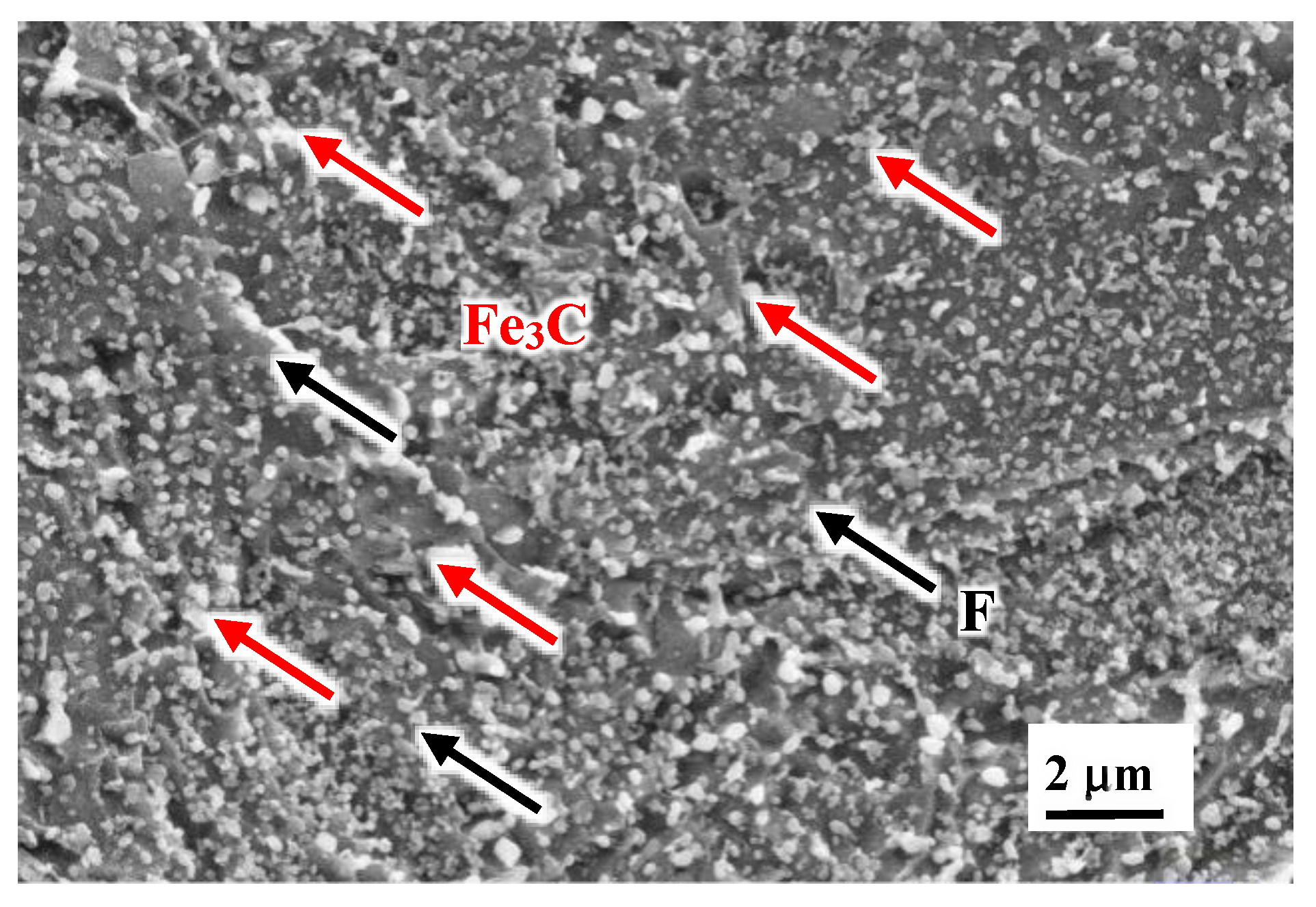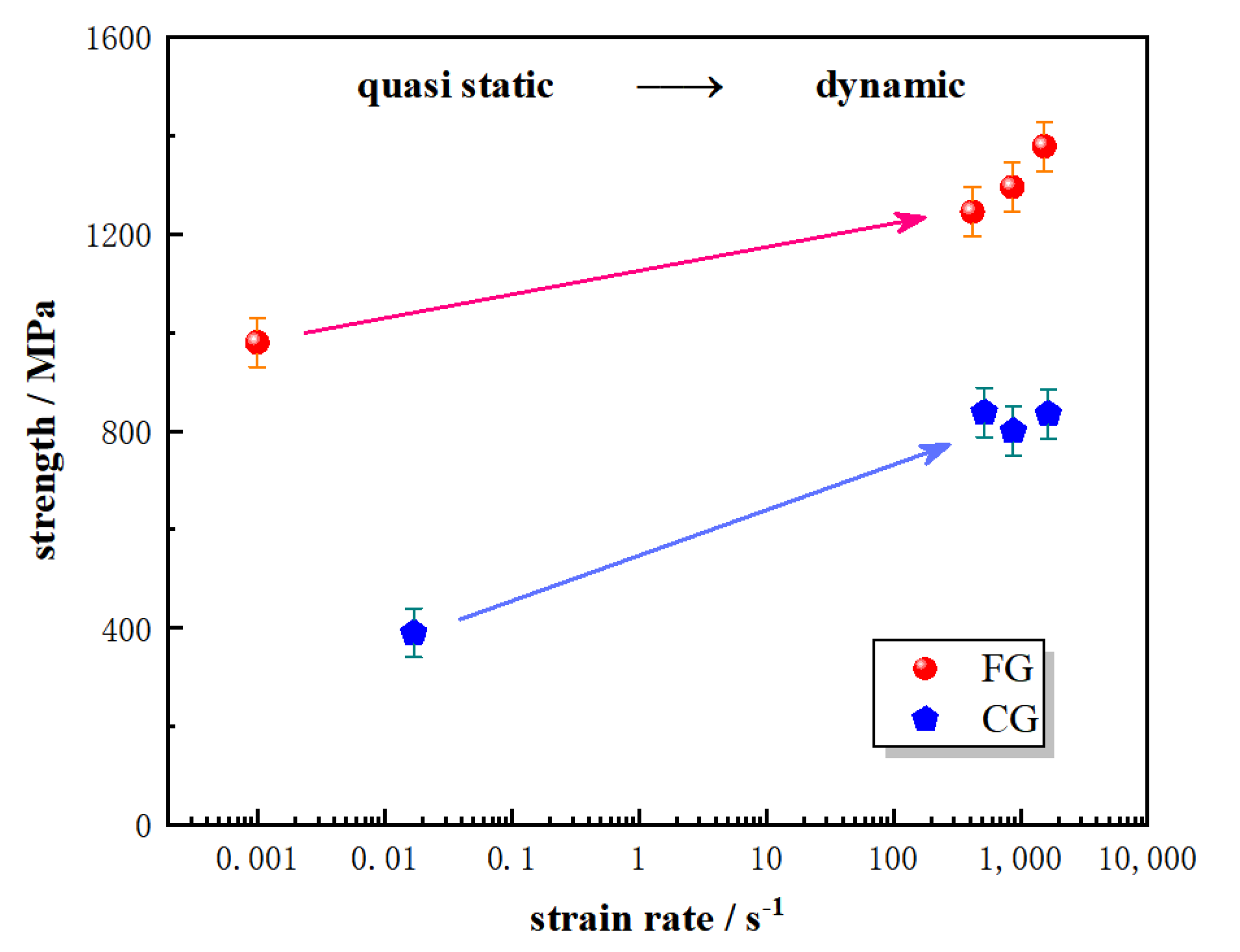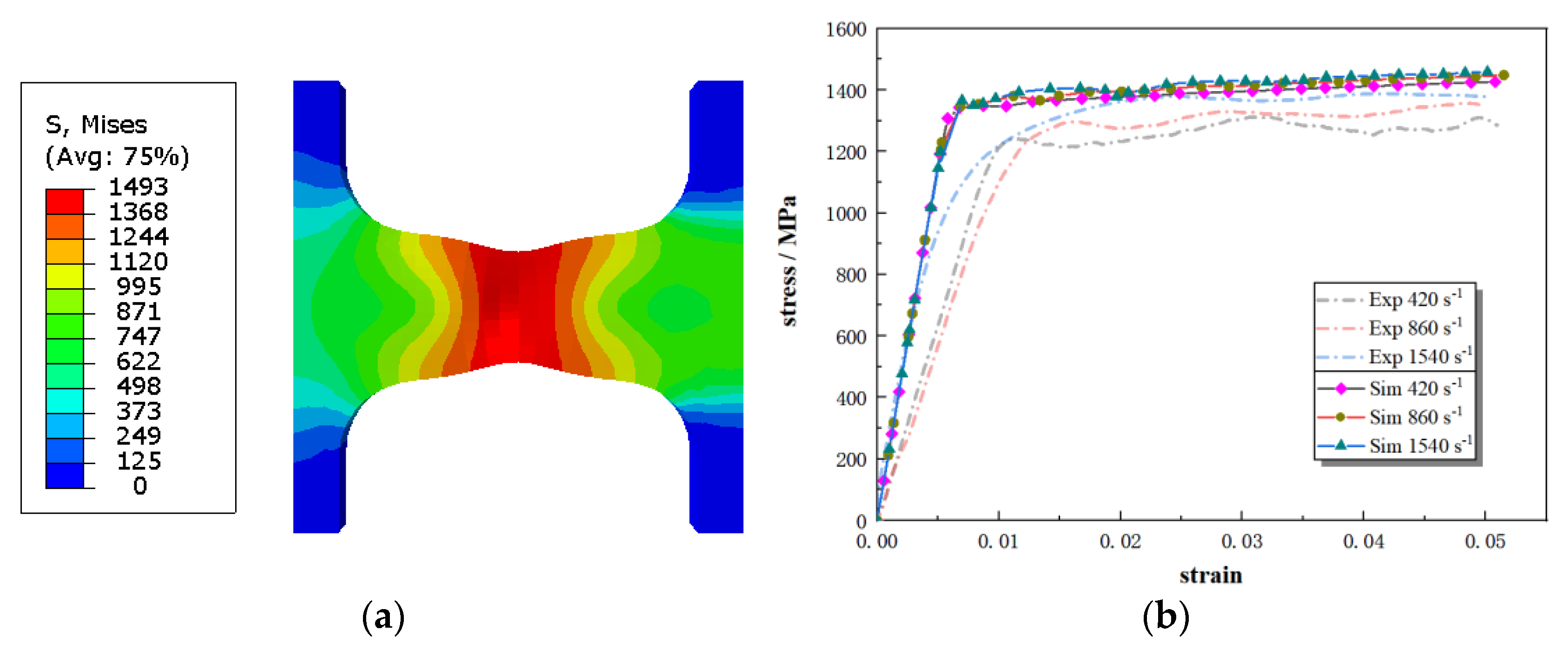1. Introduction
The production, use and performance improvement of steel materials are important to develop industrialization. For thousands of years, steel has been widely used in various engineering fields such as civil engineering, chemical engineering, aerospace and weaponry, and has profoundly affected the quality of human life. In recent years, aerospace materials continue to evolve, new materials represented by graphene, carbon fiber and rare earth elements are favored by researchers, but they still cannot surpass high-property steel in terms of material strength, impact toughness and production cost. In the future, ultra-high-strength steel will still be an indispensable material for load-bearing components such as aircraft landing gear, wing spars, and engine crankshafts. In order to meet the rapid development needs of the aviation industry, it is necessary to deeply explore the strengthening mechanism and application prospects of advanced steel materials.
Due to the lightweight and safety requirements of aircraft design, materials with high strength and toughness will be the first choice for airframe components. Ultra-fine-grained (UFG) steel has both ultra-high strength, good toughness [
1] and low production cost, which has great application potential in the aviation industry. At present, scholars in China and abroad have carried out extensive research on the preparation process and mechanical properties of UFG steel. Pang [
2] investigated the strengthening mechanism of low-temperature annealed UFG steel, and believed that grain refinement was the most effective method to simultaneously improve the strength, plasticity and impact toughness of the material. The strengthening of the experimental steel was not only the result of the interaction between dislocations, but also the interaction of grain boundaries and dislocations. Park [
3] found that when the grains are refined to less than a few microns, the strength can be effectively improved. However, the material almost loses the work hardening ability, and its yield ratio is close to 1. Liu et al. [
4] studied the effects of strain rate and temperature on the dynamic mechanical behavior of UFG IF steel. They found that UFG IF steel has low strain rate sensitivity and strong temperature sensitivity within a certain temperature range (−70 °C–100 °C). To sum up, the mechanical behavior of UFG steel is closely related to the microstructure (e.g., grain size) and loading conditions (e.g., strain rate, temperature).
Aircraft often face high-speed impact during landing, so it is of great significance to study the dynamic mechanical properties of structural component materials. At present, establishing a macroscopic phenomenological constitutive model or modifying the existing phenomenological model is the main method to describe the mechanical behavior of UFG materials. Khan [
5] modified the Johnson–Cook (J–C) to describe the flow stress of nanometallic materials by introducing the Hall-Petch relationship between yield stress and grain size. Zheng et al. [
6] introduced the grain size effect on the basis of the J–C model, and then superimposed it with the Armstrong-Frederick nonlinear hardening law. Finally, they proposed a mixed hardening model for UFG materials, which can simultaneously reflect the nonlinear hardening, grain size effect, strain hardening effect and strain rate effect of the material. Based on the modified hyperbolic sine Arrhenius equation, Wang [
7] established a constitutive model capable of simulating high temperature micro-compression deformation of UFG pure aluminum. Therefore, building a constitutive model capable of describing large plastic deformation is the basic to promote the practical application of advanced steel materials.
D6A steel is a low-alloy high-strength steel that has been widely used in solid rocket casings, aircraft landing gear, warhead casings and other fields. Shen et al. [
8,
9,
10,
11,
12] prepared micron-scale fine-grained (FG) D6A steel by using hot rolling and annealing, and analyzed the influence of grain size and nano-precipitation relative to the strength and toughness of FG steel. Grain refinement strengthening, precipitation phase strengthening and texture strengthening are the main mechanisms for the high strength of the investigated steels. Currently, several studies have extensively investigated FG D6A steel, and most of them focus on the preparation process and microstructure evolution. However, its mechanical behavior at dynamic loading was rarely reported. The present study aims to provide experimental and theoretical reference for the use of FG D6A steel in the aviation field.
2. Experimental Materials and Test Methods
The experiment material is D6A coarse-grained (CG) steel, which was produced by Baosteel Group. The D6A steel was forged into a slab with 110 mm in length, 60 mm in width, and 60 mm in thickness. First, in the process of hot rolling, the steel plate was heated to 1100 °C for 3 h, and then hot-rolled to a thickness of 10 mm after six passes. Then, the plate underwent two-phase warm rolling at 760 °C via two passes with ~25% reduction in each pass, and annealing at 660 °C for 20 min after each pass. After hot rolling and two-phase annealing, FG D6A steel samples were obtained. The nominal chemical composition of the steel, measured by using chemical analysis, is listed in as
Table 1. The microstructure of FG D6A steel before deformation was characterized by scanning electron microscope (SEM) after polishing and acid leaching. As shown in
Figure 1, the investigated steel is mainly composed of gray-black ferrite matrix (F) and white granular cementite (Fe
3C). During the hot rolling process, a large amount of spherical cementite precipitates from the grain boundary and is evenly distributed on the ferrite matrix.
Figure 2 shows the microstructure of FG steel obtained from electron backscatter diffraction (EBSD) microscopy. At the same time, the EBSD observation data were statistically sorted by Origin software, and the columnar distribution of grain size was obtained, as shown in
Figure 3a,b. The grain size of CG and FG D6A steel was 20 μm and 1.5 μm, respectively.
Uniaxial tensile tests were carried out on the specimens at room temperature. Quasi-static tensile experiment was performed on a material testing machine and dynamic tensile test was carried out on a rotating disk Hopkinson bar. The steel was prepared into a sheet specimen and connected with the loading device by gluing.
Figure 4a,b show the experimental device and specimen. Dynamic uniaxial tensile tests were conducted at various strain rates (
) (400~1500 s
−1) by using short metal rods with different sizes (8, 10 and 12 mm). For comparison, similar tensile experiments were performed on CG steel.
3. Experimental Results and Discussion
The experimental data were processed by the signal acquisition system embedded in the equipment and transformed by Origin software to obtain the stress–strain curves of the steel under different strain rates.
Figure 5a shows the representative stress–strain curves of the as-prepared CG steel, which was tested at room temperatures of 25 °C at a strain rate (
) of 0.001 s
−1, and the experiment was repeatable. The quasi-static tensile yield strength of FG D6A steel is approximately 980 MPa (curve turning point in the figure), which is significantly improved compared with that of existing CG steel (390 Mpa [
9]).
The dynamic tensile tests of the CG (
= 520, 880, 1660 s
−1) and FG (
= 420, 860, 1540 s
−1) D6A steel were carried out, and the obtained stress–strain curves are shown in
Figure 5b. It is worth noting that the first peak stress can be regarded as material strength under dynamic loading (as indicated by the dots in the figure). In this experiment, the dynamic strength of CG steel is about 800 MPa, whereas that of FG steel is over 1300 Mpa. The strength of the investigated steel at various strain rates are shown in
Table 2. In summary, grain refinement effectively improves the static and dynamic strength of D6A steel.
Similar to CG steel, the grains of FG steel still exhibit typical crystallographic characteristics, and the microstructure profoundly affects the macroscopic mechanical behavior of materials. High-density grain boundaries have a strong constraint on dislocation slip, which is mainly caused by grain boundary obstacles and the orientation difference between adjacent grains. Due to the disordered arrangement of atoms at grain boundaries, the shear stress required for dislocation slip here increases suddenly. Furthermore, grains in different orientations will restrict mutual deformation, which makes it difficult for slip to proceed along the same crystal axis and eventually increases the critical shear stress of slip.
Figure 6 shows that when the external force is not large enough to overcome the obstacle effect of grain boundary, the intragranular dislocation cannot continue to slip through the grain boundary to the adjacent crystal. With the accumulation of deformation, dislocations gather at the grain boundary and tangle with each other to produce dislocation pile-up groups, resulting in local stress concentration (shown in the red symbol), thereby improving the macroscopic strength of the investigated steel.
In addition, the deformation of FG steel can spread to more grains, so the stress distribution is more uniform than that of CG steel. Therefore, it is difficult for micropores and cracks to initiate and propagate, which ultimately increases the strength of the material.
Through microscopic observation, a large number of nano-scale cementite particles are found to be uniformly dispersed on the FG D6A steel matrix, as shown in
Figure 2. The strength of the material is effectively improved by introducing nano-scale precipitates, which have been widely used in metal materials. Essentially, precipitation strengthening is achieved by generating small, high-hardness second-phase particles that hinder dislocation motion. At the same time, the interaction between cementite and dislocations is also enhanced, thereby strengthening the metal without greatly affecting the stiffness of the material [
13]. Dislocations cannot shear hard cementite particles. In this case, dislocations will bypass particles through Orowan ring or cross-slip [
14]. The strength increment is closely related to the volume fractions and size of the precipitated phase.
Figure 7 shows that the extrusion deformation between grains provides more nucleation sites for cementite, and the local temperature rise generated by plastic deformation also accelerates the nucleation process. Fresh dislocations appear around the cementite, and the dislocation density increases uninterruptedly. With the accumulation of plastic deformation, the degree of dislocation pile-up deepens. External force causes the cementite particles to move gradually and gather at the grain boundary. Moreover, cementite has a pinning effect on the grain boundaries, which makes it difficult for the grain boundary slip between grains to proceed and aggravates the stress concentration. Therefore, the interaction of dislocations, cementite and high-density grain boundaries results in FG D6A steel with ultra-high strength.
Figure 8 presents the strength changes of CG/FG steel under static and dynamic tensile loading. D6A steel exhibits remarkable strain rate effect. As the strain rate changes from quasi-static to dynamic, the material strength increases significantly.
The fracture of the sample was observed by SEM to analyze the microstructure evolution of the investigated steel in the high-speed tensile test.
Figure 9 shows the SEM image of the FG D6A steel after dynamic tensile deformation. The comparison shows that the microstructures under different strain rates are basically the same and mainly ferrite and cementite. However, with the increase in strain rate, the deformation of ferrite structure becomes increasingly intense, resulting in the increase in the total number of grains and grain boundary density, which enhances the hindrance of dislocation movement, and thus improves the dynamic strength of FG D6A steel.
Two parameters are generally used to describe the strain rate sensitivity of materials [
15], namely the strain rate sensitivity coefficient m and the flow stress increment
. Here, the strain rate sensitivity coefficient can be calculated as follows [
16]:
where
is the strain rate and
can be taken as the yield strength corresponding to different strain rates. In addition, the flow stress increment
can be expressed as follows:
where,
and
are dynamic and static yield strength, respectively.
As shown in
Table 3, the steel exhibits obvious strain rate effect in this experiment. The strain rate sensitivity coefficient m of the original CG steel was about 0.822~0.976 at room temperature, and the flow stress increment
was about 434 MPa. Compared with the quasi-static yield strength, the dynamic strength more than doubled, and the stress increment ratio reached 113.3%. The strain rate sensitivity coefficient m and flow stress increment
of FG steel are 0.816~0.923 and 326 MPa, respectively. Although the strength increment of FG steel under dynamic loading is slightly lower than that of the original CG steel, the strength increase ratio is very small, only about 33.2%. Therefore, as the average grain size decreases from 20 μm to 1.5 μm, the strain rate sensitivity of D6A steel shows a weakening trend.
The flow stress of UFG steel can be mainly divided into two parts [
17]: thermal stress and non-thermal stress. Thermal stress corresponds to the thermal activation movement, which mainly overcomes the short-range barrier dependent on temperature and strain rate. Non-thermal stress is related to the long-range obstacles that cannot be overcome in the thermal activation process. The latter is almost independent of strain rate and temperature but largely affected by grain size. Jia established the following mechanical response function [
18] in the study of UFG iron with BCC structure:
The first three parts of the formula are the non-thermal stress dominated by initial lattice resistance and grain boundary strengthening effect, where is the strain hardening coefficient. The last part named Peierls-Nabarro stress is related to the short-range barrier, and it can be qualitatively judged that this stress component is related to the strain rate but has no direct relationship with the grain size, that is, the strain rate-dependent stress components have not changed greatly for different grain size steels. By contrast, when the size of D6A steel decreases from 20 μm to 1.5 μm, the grain boundary area increases greatly, and the non-thermal stress will occupy the main part of the flow stress. Therefore, in the same strain rate range, the proportion of strain rate-related thermal stress reduces gradually with the grain size refinement, and macroscopically, the strain rate sensitivity of FG D6A steel is weaker than that of original CG steel.
Furthermore, compared with CG steel, the strain hardening ability of FG D6A decreases under dynamic loading, and plastic instability begins to occur after the stress reaches the peak. This phenomenon deserves further study. Nevertheless, the stress softening phenomenon of some UFG materials [
15] did not appear in the D6A steel.
4. Johnson–Cook Constitutive Model and Parameter Fitting
Establishing the constitutive model that can describe the plastic deformation behavior of materials is the premise of accurately simulating severe deformation processes such as impact [
19]. In order to promote the application of FG D6A steel in aviation and military fields, it is very important to find a constitutive model that can accurately describe its dynamic deformation behavior. The J–C model has become the most widely used phenomenological viscoplastic model for metallic materials due to its simple form and easy promotion of engineering application. The J–C model well describes the relationship between flow stress and plastic strain, strain rate and temperature. Its classical mathematical expression is as follows [
20]:
Therein,
reflects flow stress;
A,
B and
n are strain-related material parameters at reference strain rates, where
A is the yield strength.
C is the coefficient describing the strain rate strengthening effect, and m is the factor describing the thermal softening effect. Here,
is the equivalent plastic strain, and
is the dimensionless equivalent plastic strain rate.
represents dimensionless temperature. as the temperature rise caused by dynamic loading is small, the thermal softening effect is not considered, so the value of m could be equal to 0. Finally, the simplified J–C model equation is obtained as follows:
The material mechanical properties under different processes are often quite different, so it is necessary to determine the parameters combined with mechanical experiments. When loading at the reference strain rate, the J–C model is further simplified to the Ludwik-Hollomon formula [
21]:
According to the quasi-static loading stress–strain curve (
Figure 5a), the yield strength of FG D6A steel is approximately about 980 MPa, that is,
A = 980. Logarithmic transformation of the above formula can be obtained:
Fit the curve of
. As shown in
Figure 10a, its slope is
n, and
B is obtained according to the intercept. Finally, the strain-related parameters can be calculated as follows:
B = 493,
n = 0.625. After the aforementioned parameters are determined, select the yield strength under different strain rates, and fit the curve. As shown in
Figure 10b, the slope is the strain rate hardening coefficient, and
C = 0.026.
In conclusion, the J–C model suitable for FG D6A steel at room temperature can be obtained from the data, as follows:
A 3D specimen model is established, the size of which is consistent with the experimental specimen. The left end surface of the specimen is completely fixed, and the right end surface is given velocity boundary conditions to simulate loading at different strain rates. Hexahedral elements were selected for the mesh, and the mesh in the middle was appropriately refined. Select the J–C model that was built in the software and input the above-mentioned relevant parameters. Of note, the elastic modulus of FG D6A steel is 210 GPa. Loading simulations at different strain rates were carried out in ABAQUS software using explicit dynamic analysis type.
Figure 11a shows the nephogram of finite element tensile simulation results. As can be observed, the specimen generates stress concentration in the middle. Calculate the mechanical information of the middle part, plot the stress–strain curve and synchronously compare with the experimental data, as shown in
Figure 11b. The results indicate that the stress value of the simulation results is basically consistent with the experimental data. Several stress values under the same strain are selected from the experimental data and the numerical simulation curve, and the comparison shows that the average error in the hardening stage maintains within 15%. Therefore, the parameters accurately describe the dynamic mechanical behavior of FG D6A steel at a certain range of strain rate in our tests.


















